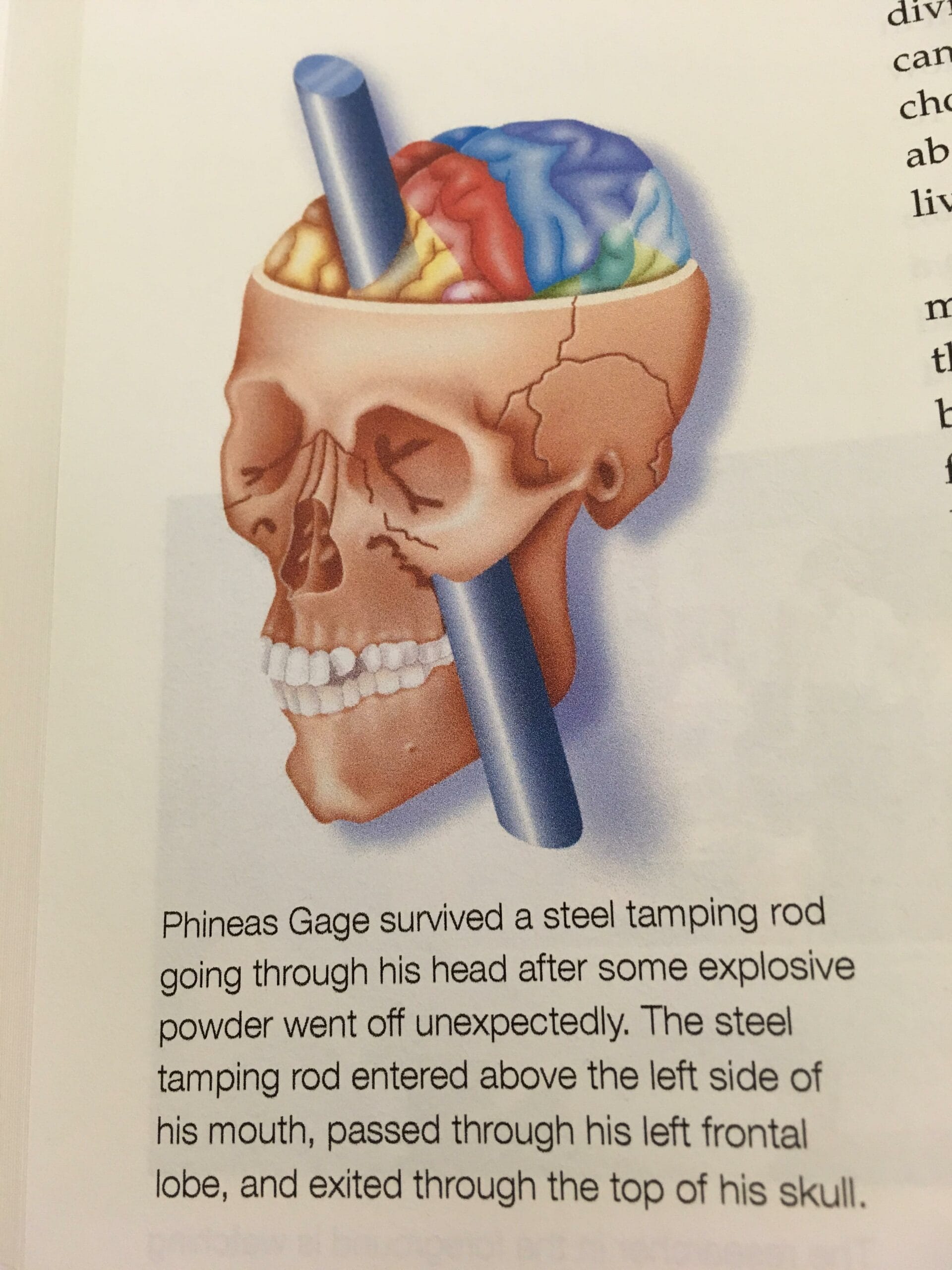Phineas Gage’s story, popularized through various books, reveals groundbreaking insights into brain function and personality change after traumatic injury. This article explores the life of this remarkable man, the accident that changed the course of neuroscience, and the books that have brought his story to light.
The Astonishing Case of Phineas Gage
In 1848, 25-year-old Phineas Gage, a railroad construction foreman in Cavendish, Vermont, experienced a life-altering accident. A tamping iron, a 3-foot 7-inch rod weighing over 13 pounds, was propelled through his skull due to a premature explosion. Remarkably, Gage survived, remaining conscious and able to speak immediately after the incident. Dr. John Martyn Harlow’s meticulous documentation of the case provided early insights into the brain’s resilience.
Gage’s Transformation and Impact on Neuroscience
Initially perceived as responsible and efficient, Gage underwent significant personality changes after the accident. He became impulsive, irreverent, and unreliable. This dramatic shift highlighted the connection between brain function, specifically the frontal lobe, and personality. Gage’s case became a landmark study in neuroscience, providing early evidence of how physical brain damage can impact behavior and cognitive abilities. It suggested the brain possesses a remarkable plasticity – an ability to adapt even after severe trauma. The changes in his personality sparked decades of research. Scientists started to ask crucial questions: How does the structure of the brain relate to its function? How does the brain contribute to who we are as individuals? This perplexing change is a key focus in many Phineas Gage books.
Exploring Phineas Gage Books
While Phineas Gage didn’t write a book himself, several authors have examined his case, providing varying perspectives on his life, the accident, and its impact on neuroscience. These books don’t just tell the story of a freak accident; they chronicle a scientific revolution. Think of Gage’s brain as uncharted territory. The iron rod, though tragic, inadvertently created a map, offering a glimpse into the workings of the frontal lobe.
“Phineas Gage: A Gruesome but True Story About Brain Science” by John Fleischman offers an accessible account for younger audiences, exploring Gage’s life and the scientific impact. It emphasizes the historical context and the basic principles of brain science relevant to the case. For a deeper dive, “An Odd Kind of Fame: Stories of Phineas Gage” by Malcolm Macmillan provides a more comprehensive and scholarly work, delving into the historical, medical, and social aspects of Gage’s story. It explores the various interpretations of the accident’s effects on Gage’s behavior and the evolution of scientific understanding.
| Book Title | Author | Focus |
|---|---|---|
| Phineas Gage: A Gruesome but True Story About Brain Science | John Fleischman | Accessible narrative, suitable for younger readers, focuses on the science |
| An Odd Kind of Fame: Stories of Phineas Gage | Malcolm Macmillan | In-depth scholarly analysis, historical and medical context, explores myths and interpretations |
Further Exploration
Other books and articles discussing Phineas Gage offer readers further avenues for exploration. These include academic papers, historical accounts, and other relevant literature. If you’d like to explore other captivating stories, check out The Mistakes of Chincoteague, a novel by Marguerite Henry.
The Ethical Considerations and Human Element
Gage’s case also raises important ethical questions. Both during his life and after his death, Phineas and his tamping iron were put on display. This raises questions about exploitation and the appropriate boundaries when studying a unique medical case. His story also highlights the fragility and resilience of the human brain and spirit, reminding us that Phineas was more than a medical marvel. He was a man whose life was drastically altered, impacting his relationships and sense of self. Books about Phineas Gage help us understand the personal cost of his injury – how it affected his work and his sense of self. It’s a story of resilience, of trying to rebuild a life after an unimaginable event.
Ongoing Research and Evolving Understanding
Research into brain injuries continues. Scientists are still exploring the long-term effects of traumatic brain injuries and developing new techniques to map brain functions. What we know about Gage’s case, while groundbreaking for its time, is likely just one chapter in a much larger story about the brain’s mysteries. While some experts believe they understand the extent of his injuries’ effects, there is debate surrounding the long-term impact on his life, demonstrating how scientific understanding evolves. What is considered accurate today might be refined or even challenged tomorrow. Gage’s story encourages us to ask questions, explore different theories, and appreciate the ongoing quest to unravel the complexities of the human brain. It also prompts exploration of how Gage’s case influenced early medical ethics regarding patient privacy. For those interested in the philosophical implications of the mind and self, exploring the philosophy of Meister Eckhart, a German philosopher and theologian, might provide interesting parallels.

















3 thoughts on “The Best Phineas Gage Books: Unraveling the Man, the Myth, and the Brain”
Comments are closed.